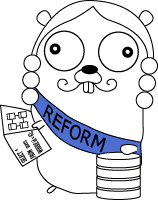go-firestorm
Go ORM (Object-relational mapping) for Google Cloud Firestore.
Goals
- Easy to use
- Non intrusive
- Non exclusive
- Fast
Features
- Basic CRUD operations
- Search
- Concurrent requests
- Transactions
- Configurable auto load of references
- Handles cyclic references
- Sub collections
- Supports embedded/anonymous structs
- Supports unexported fields
- Custom mappers between fields and types
- Caching
- Supports Google App Engine - 2. Gen (go version >= 1.11)
Getting Started
- Prerequisites
- Basic CRUD example
- Search
- Concurrent requests
- Transactions
- Configurable auto load of references
- Help
Prerequisites
go get -u github.com/jschoedt/go-firestorm
Setup
- Setup a Firestore client
- Create a firestorm client and supply the names of the id and parent fields of your model structs. Parent is optional. The id field must be a string but can be called anything.
...
client, _ := app.Firestore(ctx)
fsc := firestorm.New(client, "ID", "")
- Optional. For optimal caching to work consider adding the CacheHandler
http.HandleFunc("/", firestorm.CacheHandler(otherHandler))
Basic CRUD example
Note: Recursive Create/Delete is not supported and must be called on every entity. So to create an A->B relation. Create B first so the B.ID has been created and the create A.
type Car struct {
ID string
Make string
Year time.Time
}
car := &Car{}
car.Make = "Toyota"
car.Year, _ = time.Parse(time.RFC3339, "2001-01-01T00:00:00.000Z")
// Create the entity
fsc.NewRequest().CreateEntities(ctx, car)()
if car.ID == "" {
t.Errorf("car should have an auto generated ID")
}
// Read the entity by ID
otherCar := &Car{ID:car.ID}
fsc.NewRequest().GetEntities(ctx, otherCar)()
if otherCar.Make != "Toyota" {
t.Errorf("car should have name: Toyota but was: %s", otherCar.Make)
}
if otherCar.Year != car.Year {
t.Errorf("car should have same year: %s", otherCar.Year)
}
// Update the entity
car.Make = "Jeep"
fsc.NewRequest().UpdateEntities(ctx, car)()
otherCar := &Car{ID:car.ID}
fsc.NewRequest().GetEntities(ctx, otherCar)()
if otherCar.Make != "Jeep" {
t.Errorf("car should have name: Jeep but was: %s", otherCar.Make)
}
// Delete the entity
fsc.NewRequest().DeleteEntities(ctx, car)()
otherCar = &Car{ID:car.ID}
if err := fsc.NewRequest().GetEntities(ctx, otherCar)(); err == nil {
t.Errorf("We expect a NotFoundError")
}
Search
Create a query using the firebase client
car := &Car{}
car.ID = "testID"
car.Make = "Toyota"
fsc.NewRequest().CreateEntities(ctx, car)()
query := fsc.Client.Collection("Car").Where("make", "==", "Toyota")
result := make([]Car, 0)
if err := fsc.NewRequest().QueryEntities(ctx, query, &result)(); err != nil {
t.Errorf("car was not found by search: %v", car)
}
if result[0].ID != car.ID || result[0].Make != car.Make {
t.Errorf("entity did not match original entity : %v", result)
}
Concurrent requests
All CRUD operations are asynchronous and return a future func that when called will block until the operation is done.
NOTE: the state of the entities is undefined until the future func returns.
car := &Car{Make:"Toyota"}
// Create the entity which returns a future func
future := fsc.NewRequest().CreateEntities(ctx, car)
// ID is not set
if car.ID != "" {
t.Errorf("car ID should not have been set yet")
}
// do some more work
// blocks and waits for the database to finish
future()
// now the car has been saved and the ID has been set
if car.ID == "" {
t.Errorf("car should have an auto generated ID now")
}
Transactions
Transactions are simply done in a function using the transaction context
car := &Car{Make: "Toyota"}
fsc.DoInTransaction(ctx, func(transCtx context.Context) error {
// Create the entity in the transaction using the transCtx
fsc.NewRequest().CreateEntities(transCtx, car)()
// Using the transCtx we can load the entity as it is saved in the session context
otherCar := &Car{ID:car.ID}
fsc.NewRequest().GetEntities(transCtx, otherCar)()
if otherCar.Make != car.Make {
t.Errorf("The car should have been saved in the transaction context")
}
// Loading using an other context (request) will fail as the car is not created until the func returns successfully
if err := fsc.NewRequest().GetEntities(ctx, &Car{ID:car.ID})(); err == nil {
t.Errorf("We expect a NotFoundError")
}
})
// Now we can load the car as the transaction has been committed
otherCar := &Car{ID:car.ID}
fsc.NewRequest().GetEntities(ctx, otherCar)()
if otherCar.Make != "Toyota" {
t.Errorf("car should have name: Toyota but was: %s", otherCar.Make)
}
Configurable auto load of references
Use the req.SetLoadPaths("fieldName") to auto load a particular field or req.SetLoadPaths(firestorm.AllEntities) to load all fields.
Load an entity path by adding multiple paths eg.: path->to->field
fsc.NewRequest().SetLoadPaths("path", "path.to", "path.to.field").GetEntities(ctx, car)()
Help
Help is provided in the go-firestorm User Group


